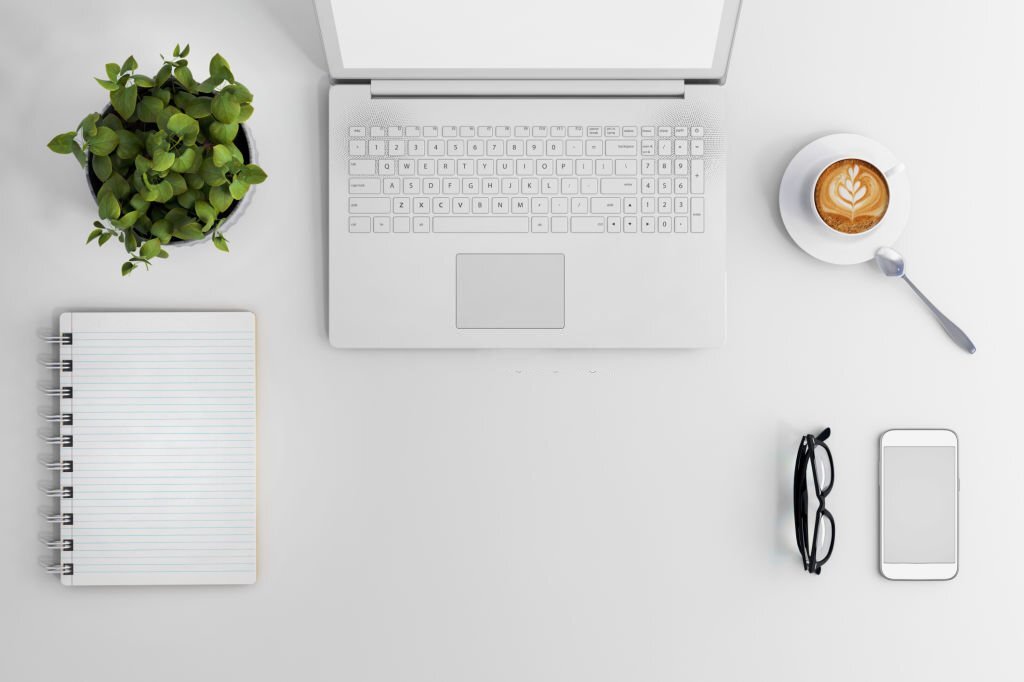I struggle with ADHD, so overcoming task anxiety and being productive is sometimes challenging. If you’re a writer with an easily distracted brain like mine, read on.
Over time, I’ve figured out eight elements that contribute to my task anxiety and writer’s block:
- Topic
- Workspace
- Light
- Sound
- Pressure
- Templates
- Stimulants
- Exercise
#1 Topic
If you’re struggling with writer’s block, it’s usually an indicator of a boring topic or narrative direction.
My solution: Change the narrative or write about something else.

When I write about something I’m passionate about, time flies and I don’t track word counts — the words just flow.
Write what you care about, first and foremost. If you can’t, find an interesting angle to tackle your topic from.
This could be a human element, an interesting fact, a shocking truth, or a contrarian view. If you enjoy writing it, the reader will pick up on your enthusiasm.
#2 Workspace
Visual workspace distractions hamper productivity. The messier my workstation is, the more I struggle to focus.
My solution: Reduce visual distractions.

I put unneeded items away and arrange everything as neatly as possible. This prevents my easily distracted brain from focusing on anything else other than work.
#3 Light
Daylight causes my mind to wander and daydream. Sitting in a top-floor apartment overlooking the city is excellent for thinking and planning, but useless for actual work.
My solution: Work in minimal light.

During the day, I do all my creative work, post on social, and work on graphic design — anything that doesn’t require deep focus.
When the sun goes down, my brain naturally ‘cools down’ and I can focus. I write best at night and at the crack of dawn.
I turn off all the lights in the house and close the curtains — the only light comes from my laptop screen.
On the screen itself, there are only two windows open at any given time, and my desktop background is black. This focuses my mind entirely on the work.
#4 Sound
Sound equals distraction. Road traffic, hallway movements, phone notifications, and even my fridge all pierce my focus.
My solution: Block out the noise.

I have Airpod Pros with Active Noise Cancellation, and I recently bought nuraphones. They’ve got double noise cancellation — active and passive — which helps with focus tremendously.
However, I play music at a low volume to put me in the mood. Anything with lyrics distracts me (as I’ll focus on the lyrics over my work), so lofi music or rain sounds are the perfect work companions.
#5 Pressure
I realized I work best under an imminent deadline. Any time before then and I couldn’t really be bothered — my brain hasn’t ‘warmed up’ yet.
My solution: Force a deadline.

To hack your productivity this way, track the times when you feel most motivated to do stuff. Then, reverse engineer your deadlines to trigger that point as often as possible.
For example, if you rush to deliver articles three days before deadlines, never give yourself more than three days to complete an article.
#6 Templates
I dread starting a new piece when I don’t know what direction it will take. It’s the perfect recipe for procrastination.
My solution: Work from a template or write the outline first.

Templates and outlines are especially helpful for wordsmiths. Knowing in advance where you’re going with a script or article eliminates anxiety and reduces writer’s block.
It’s the same with photographers — when you use presets, editing and retouching are a breeze.
If you’re unsure what to write, here are 15 ways to generate content ideas.
#7 Stimulants
Your brain might feel too sluggish to turn work in quickly. If time is not on your side, certain foods or drinks might help.
My solution: Micro-dose on the right stimulants.

If coffee does it for you, sip on some to stimulate and stretch your focus.
For others, sugar does the trick — cookies and candy might give you a temporary boost.
Coffee puts me to sleep — but low-dose THC and CBD treats put me in the right mood to work.
Find what works for you and use it in moderation — but let stimulants be a last resort.
#8 Exercise
Counterintuitively, having too much energy makes it harder to focus.
My solution: Work out before you start your workday.

A workout calms me down and injects happy hormones into my brain. This puts me in the right mood to focus on deep work.
Deep work and deep muscles? Sign me up.
Beat task anxiety at its own game
Task anxiety is a thing, and it makes it hard to start work, power through it, or complete it on time.
By understanding your triggers, you can overcome performance anxiety and deliver your best work, every time.
In summary:
- Write on a topic you’re passionate about — or change the narrative.
- Reduce the amount of visual distraction in your workspace.
- Work in the right light. If you thrive in darkness, kill the lights. If you need light, work near an open window with a view.
- Reduce sounds through earphones and the Do Not Disturb mode on your devices. If you need sound stimulation, play low music in the background.
- Let your brain warm up naturally, and don’t beat yourself up if you don’t feel ready to work just then. Apply artificial pressure through deadlines if that helps.
- Write from templates and outlines — this reduces the time it takes to finish a script or article.
- Micro-dose on the right stimulants for a quick fix — but don’t get addicted.
- Exercise often to clear your head and improve your health.
Go forth and conquer.

